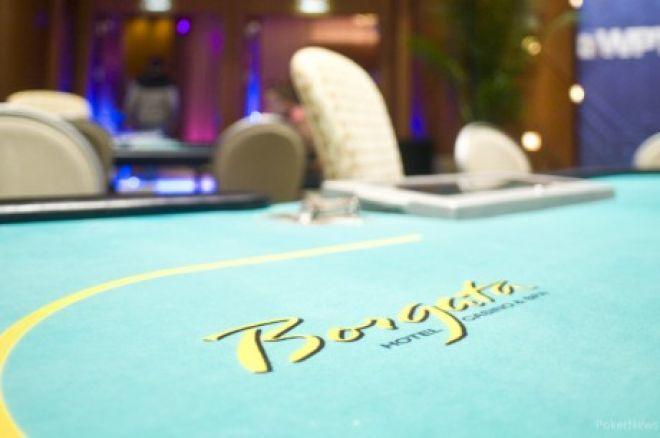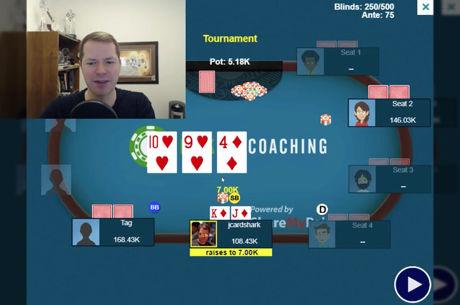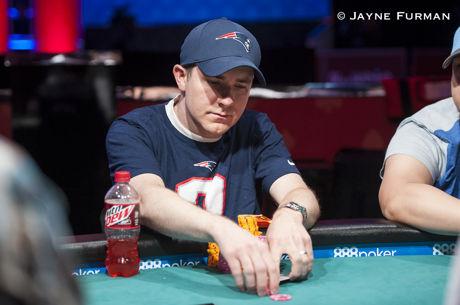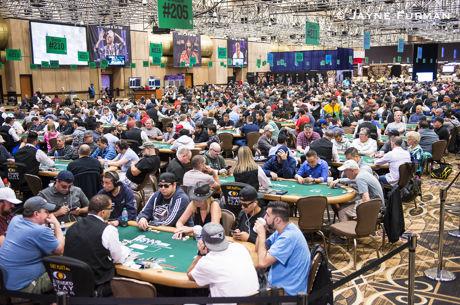His and Hers Poker: Crime and Punishment

Greetings, Poker Friends! This is the first of (hopefully) many strategy articles being presented by His and Hers Poker as contributing writers for PokerNews. His and Hers Poker is a free, weekly strategy podcast hosted by Matt and Tracey Waldt.
We are a married couple who primarily play at the Borgata (in Atlantic City) and Parx Casino (outside of Philadelphia). On our podcast, we take an in-depth look at the strategy and decision-making behind two hands we played during the prior week. These are live cash game hands played primarily at the $2/$5 level, with occasional $1/$2 and $1/$3 hands.
On the podcast, we focus on giving our listeners practical advice about hand reading, with an emphasis on how to identify and exploit the common leaks and imbalances often found among live low-stakes players. Here, we'll do the same with hands we've played, starting with today's hand.
The Table and Villain(s)
It's a $2/$5 NL table at the Borgata. The primary Villain in the hand is in the small blind — a regular in his late 20s who is a competent, thinking player who is often aggressive. He'll three-bet liberally from all positions. From the SB, he plays a plays a heavy three-bet strategy, but he does have a flatting range.
His main leak is a severe aversion to check-calling flops. In other words, he generally hates to take his foot off the gas once he has the lead. If someone plays back at him, however, he will find correct folds.
He has played with Hero (Matt) before and views Hero as thinking and aggressive.
Effective Stacks: ~$1,050 (Villain).
Preflop
Action
It folds to Hero in the lojack seat who opens to $20 with 9♥8♥. The cutoff and button both call, then Villain in the small blind three-bets to $110. Hero calls and both the cutoff and button fold.
Analysis
A good sizing strategy for three-betting is 3x the initial raise, plus 1x for each intervening caller, plus 1x for being out of position. Here, that would equate to 3x + 1x + 1x + 1x = 6 x $20 = $120. So Villain's three-bet is probably a little too small.
Villain's three-bet range will, of course, include the normal premium holdings which we find in a typical low-stakes player's range, that is, [QQ+, AK, AQs]. Since this particular Villain is three-betting at a good clip, we can also expect to find other Broadway hands (suited and unsuited) and pairs down to TT.
Because he has a flatting range, however, that means he is not three-betting his entire range from the small blind. As a result, he probably doesn't have hands like 88, T9o and 76s in his three-betting range — these are relegated to his flatting range.
We are getting almost 2-to-1 to call with our suited connector that is low enough that it doesn't suffer domination issues from Villain's range. There is more than 10x our call in the effective stack, so we have decent implied odds with a nice drawing hand. This is a good spot to defend.
Flop
Action
With $265 in the pot, the flop comes K♥7♦2♥. Villain leads for $110, and Hero calls.
Analysis
It is en vogue right now in poker to continuation bet your entire three-bet range for a low sizing on most boards. That's particularly true of this Villain, who as mentioned has a severe allergy to check-calling. It's likely that Villain is c-betting his entire three-bet range we mentioned above.
Plugging that range into an equity calculator, on this flop we have 44.7 percent equity against it, making this at least a call. But, do we want to raise? Tracey and Matt have different opinions on this spot.
Tracey's Take: We have a draw that has no showdown value and are facing a c-bet from a range with a ton of air. I like a raise here to just take down the pot.
Matt's Take: I prefer a call. Granted, we do have zero showdown value. Yet we have a ton of equity against his betting range (and not so much against his calling range). However, my main issue is what are we repping if we raise? Only 77 and 22. I would prefer a raise on another board where we could rep all of the sets and two-pair hands. If this were an unsophisticated Villain, it wouldn't matter. But, this opponent is going to know how to range us correctly.
Turn
Action
There's $485 in the middle now as the turn brings the 7♣, making the board K♥7♦2♥7♣. Villain bets $215, leaving himself about $615 behind. Hero shoves for Villain's effective stack. Villain tanks, then finally folds after saying "good shove."
Analysis
This is where Villain commits what we might call a "range crime," and it's time for us to deliver the punishment!
Even though this Villain doesn't like to check, he is still a smart player. That means his betting range here is probably AA, all K-x hands, and heart draws. Notice what his value range looks like. Except for three combos of KK, it is entirely one-pair hands. And, he has precisely zero 7-x hands in his range.
Notice that this is because he has a flatting range from the SB. That means there is a cutoff line where he stops three-betting and starts flatting. That line is probably located far above holdings containing a seven.
By contrast, we have a bunch of sevens in our range. We definitely have 87s and 76s. Having opened from the lojack, we probably also have 97s and maybe even 75s. We could also have slowplayed 77 and 22 on the flop in position.
At this point we only have 16.4 percent equity against his likely range, so we cannot call again for the price being laid. However, we can now rep enough holdings for a convincing shove. Villain's comment after folding sounds like someone fishing for a reaction. He likely had a good king, but he just couldn't imagine us shoving with anything but a value hand.
The Takeaway
Even decent low stakes players rarely take the time to consider how a turn card interacts with their range versus their opponent's. They blindly keep betting with one pair. If someone raises them, they feel that they can fold with complete confidence. They cannot imagine that someone will punish them by bluff-raising a turn card simply because that card is bad for the bettor's range.
Find spots in your own play to deliver the punishment on turn cards that cannot possibly have helped your opponent!
His and Hers Poker is a free, weekly strategy podcast hosted by Matt and Tracey Waldt. They are a married couple who play live cash games on the East Coast. Their podcast focuses on providing practical advice about hand reading, with an emphasis on how to identify and exploit the common leaks and imbalances of low-stakes players. His and Hers Poker can be found on iTunes, Google Play and other podcast services. For more information, and to subscribe, please visit hisandherspoker.com.









